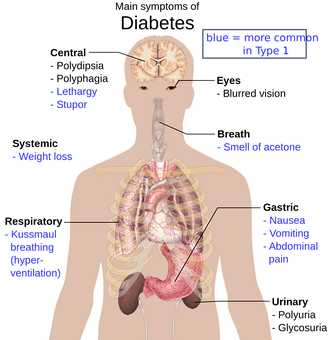Diabetic retinopathy (DR) is a ocular pathology which can affect both individuals with diabetes mellitus type 1 (DMT1) and those with diabetes mellitus type 2 (DMT2).
Many studies have highlighted a close correlation, especially in subjects with DMT1, between poor glomerular filtration, which is one of the causes of the onset of diabetic nephropathy, and diabetic retinopathy. The association between these three different pathological conditions - nephropathy, retinopathy and DMT1 - always appeared less relevant among subjects with DMT2, until the publication of a recent study. An analysis of data conducted on a large Asian population has, in fact, demonstrated a significant correlation between glomerular filtration rate and different stages of severity of DR. In particular, the more the renal function is compressed, the greater the severity of DR found in the DMT2 subject.
Why is renal function related to diabetic retinopathy?
In the opinion of the Experts, thehe association between the two pathological conditions stems from similarities in their pathogenesis. Diabetic nephropathy and diabetic retinopathy, in fact, are microvascular diseases that share not only pathogenetic molecular mechanisms, but also certain risk factors underlying their onset including DMT2, age, smoking, hypertension, dyslipidaemia and obesity.
Hyperglycaemia causes structural and functional changes in both the kidneys and the retina. High blood glucose levels can cause thickening of the walls of the glomerulus (the portion of the kidney responsible for blood filtration), capillary obstruction or the death of certain highly differentiated cell lines in the nephron. These alterations are reflected in a decline in kidney function. At the retinal level, on the other hand, hyperglycaemia causes the death of glial cells, constituents of the ocular nerve tissue, resulting in severe impairment of the subject's vision.
In addition, patients with chronic kidney disease had a higher risk of severe visual impairment than patients with normal kidney function. According to these authors, therefore, the glomerular filtration rate could also be an important clinical marker for diabetic retinopathy. Furthermore, the existence of this correlation would confirm, in DMT2 patients, the importance of a regular monitoring of both glomerular filtration rate and visual function.
Source:
Wisit Kaewput et al. Associations of renal function with diabetic retinopathy and visual impairment in type 2 diabetes: A multicentre nationwide cross sectional study. World J Nephrol 2019, 21; 8(2): 33-43.
Dr. Carmelo Chines
Direttore responsabile

